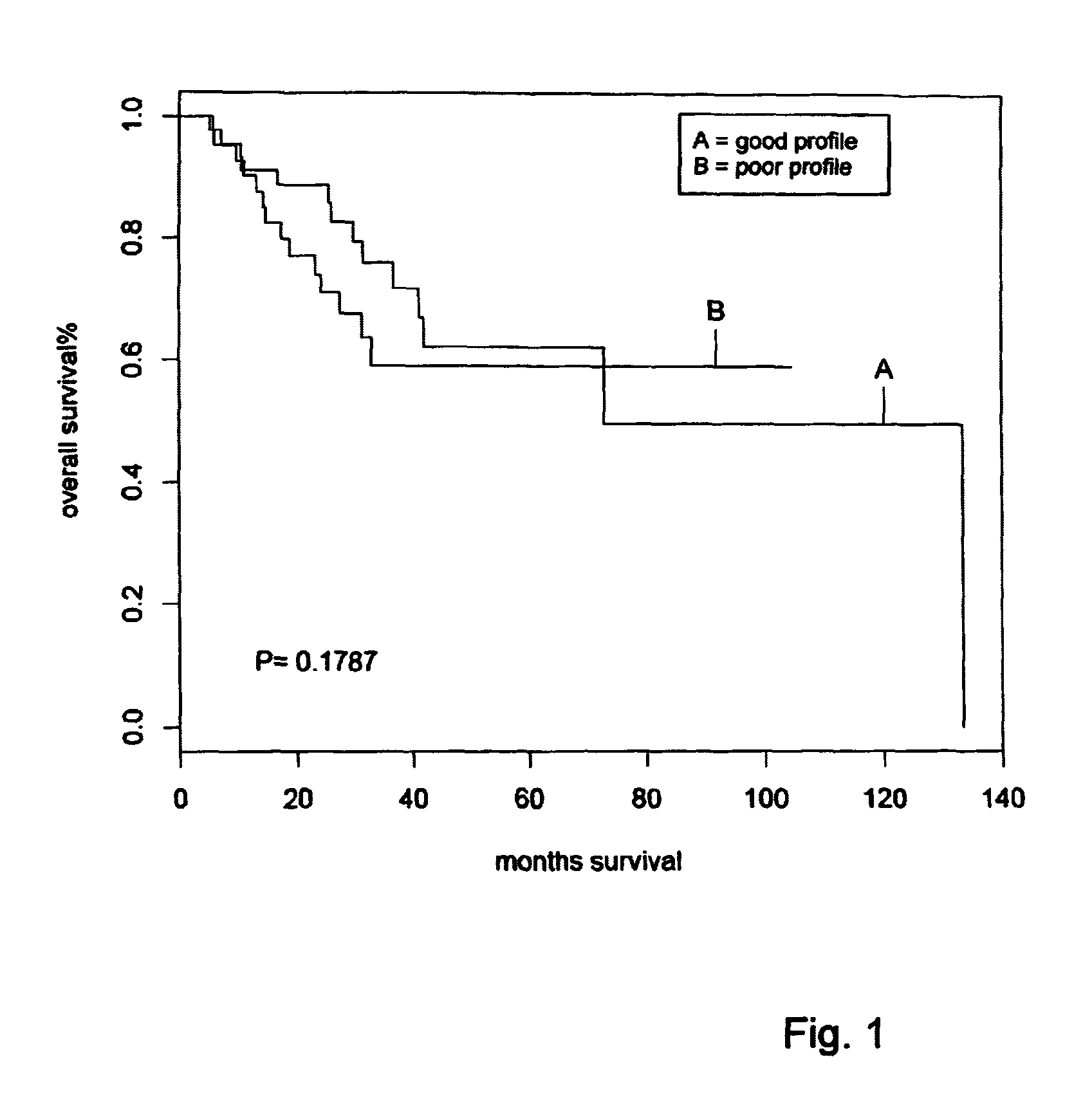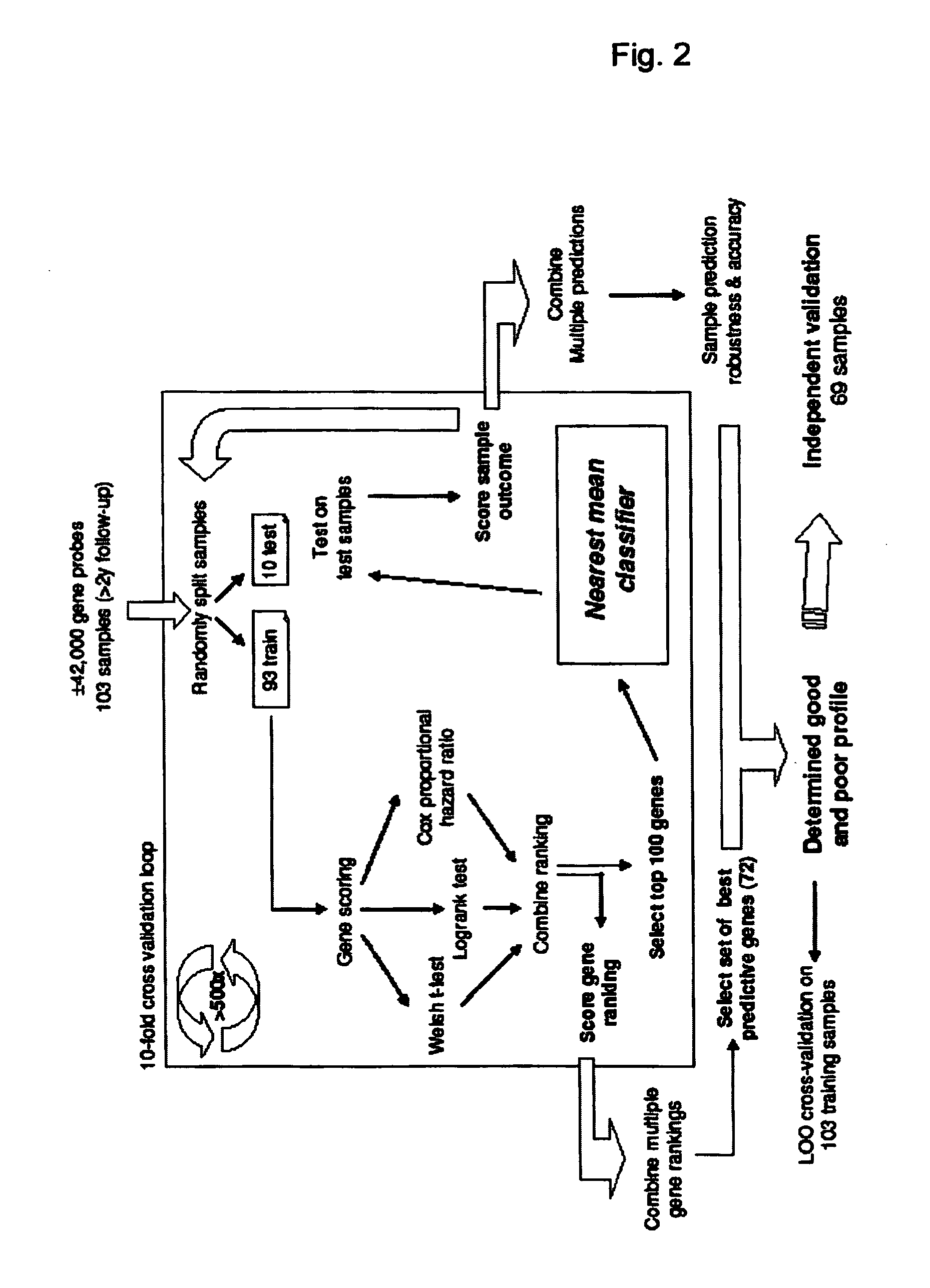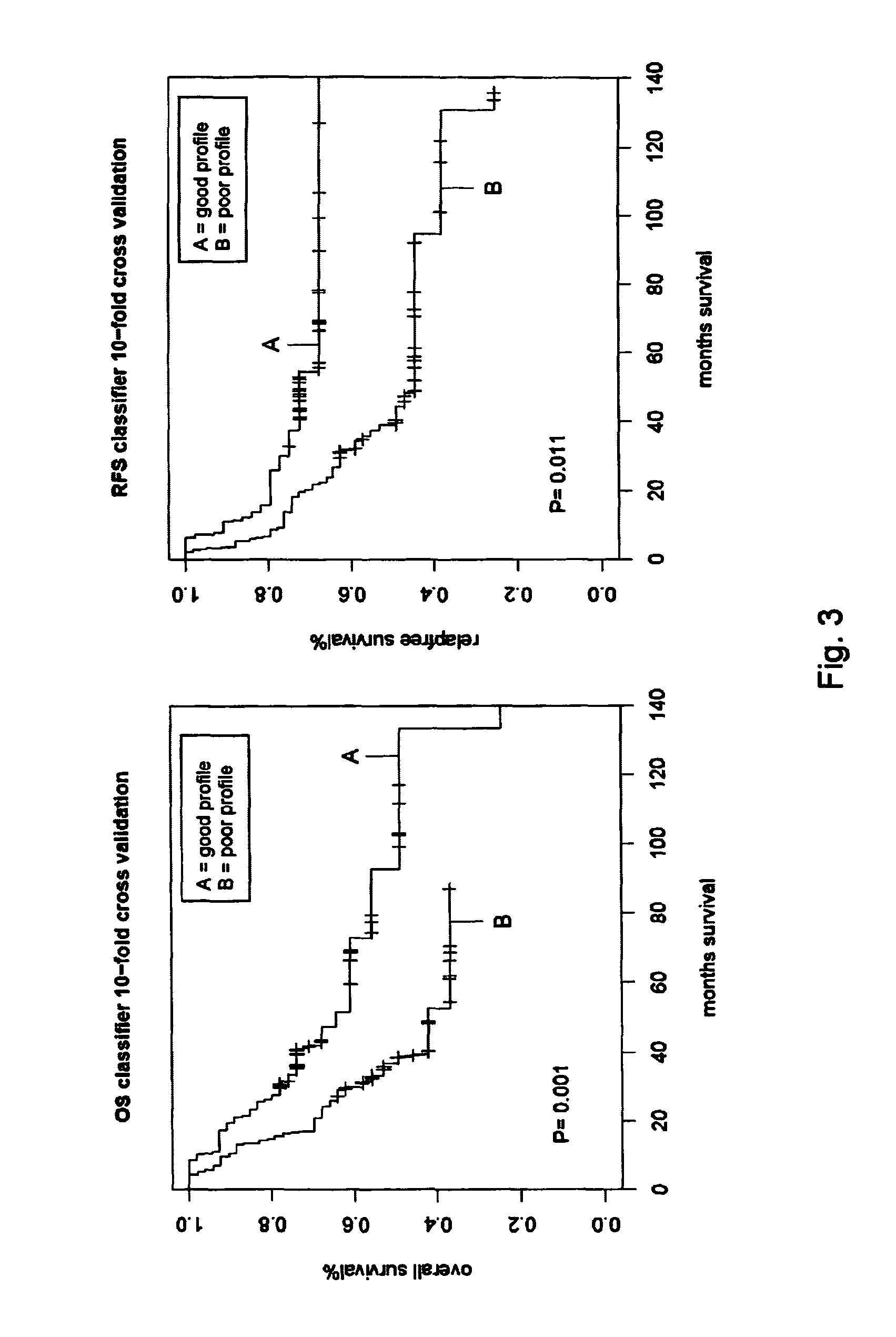Prognostic gene expression signature for non small cell lung cancer patients
a gene expression and non-small cell technology, applied in the field of cancer prognosis and diagnosis, can solve the problems of side effects, the benefit of adjuvant chemotherapy for patients with stage i nsclc remains controversial, and the risk of developing lung cancer
- Summary
- Abstract
- Description
- Claims
- Application Information
AI Technical Summary
Benefits of technology
Problems solved by technology
Method used
Image
Examples
example 1
[0080]Non small cell lung cancer samples were analyzed on Agilent 44K array against a lung reference pool that consisted of a pool of RNA from 65 NSCLC samples. A total of 103 samples were used for training the predictive signature and 69 as an independent validation set. The samples originated from 5 different European institutes and included mainly squamous cell carcinomas and adenocarcinomas. An overview of the sample and patient characteristics is given in Table 1. All samples were taken with informed consent of the patients according to the ethical standards of the Helsinki Declaration. RNA isolation and cRNA labeling followed standard protocols (Glas et al., BMC Genomics 2006; 7: 278). Hybridization was performed on Agilent platform (Agilent 44K arrays) according to standard procedures described by the manufacturer and as described elsewhere (Glas et al., BMC Genomics 2006; 7: 278). R and Bioconductor packages, available from the Bioconductor project, were used for statistical...
example 2
[0086]To determine the minimal number of signature genes that are needed for an accurate prognostic signature, the set of 237 genes was ranked according to the prognostic power of the individual genes and the set of 237 genes was sequentially reduced till a gene set comprising only the two top ranked genes. For each different gene set size (i.e. comprising from 2 genes up to 237 genes) the negative predictive value (NPV), positive predictive value (PPV) and total accuracy were determined for prognosis off overall survival for at least 3 years. FIG. 8 shows that the predictive power of the signature decreases only marginally in case of a lower number of ranked signature genes; a prognostic signature that comprises of only the top 2 genes has a NPV of 80 percent and a total accuracy of 70 percent. Thus, a small number of top-ranked genes already showed a high accuracy in prediction of low-risk patients (overall survival NPV of 83%).
[0087]We further analyzed the performance of a random...
example 3
[0088]To test whether the classifier predicted survival independently of the other two prognostic factors, tumor type and tumor grade (FIG. 1), a univariate and a multivariate analysis were performed (Table 4). In a univariate analysis, the 72-gene signature was the most significant prognostic factor with a hazard ratio of 4.83 (95% CI: 2.47-9.44, P=4.1e-6) for OS and a hazard ratio if 4.86 (95% CI: 2.40-9.50, P=3.70-6) for RFS. In a multivariate analysis with the other two prognostics factor, the predictive power of the signature remained similar (hazard ratios of 4.70 and 4.61 for overall and relapse-free survival, respectively, Table 4). This specified that the prognostic 72-gene classifier predicted survival outcome independently of the other two factors. The multivariate analysis indicated that tumor grading has an added predictive value on top of the gene classifier (Table 4). A combination of tumor grading (grade I or II) and the signature outcome (low-risk or high-risk) resu...
PUM
| Property | Measurement | Unit |
|---|---|---|
| Time | aaaaa | aaaaa |
| Level | aaaaa | aaaaa |
Abstract
Description
Claims
Application Information
 Login to View More
Login to View More - R&D Engineer
- R&D Manager
- IP Professional
- Industry Leading Data Capabilities
- Powerful AI technology
- Patent DNA Extraction
Browse by: Latest US Patents, China's latest patents, Technical Efficacy Thesaurus, Application Domain, Technology Topic, Popular Technical Reports.
© 2024 PatSnap. All rights reserved.Legal|Privacy policy|Modern Slavery Act Transparency Statement|Sitemap|About US| Contact US: help@patsnap.com










